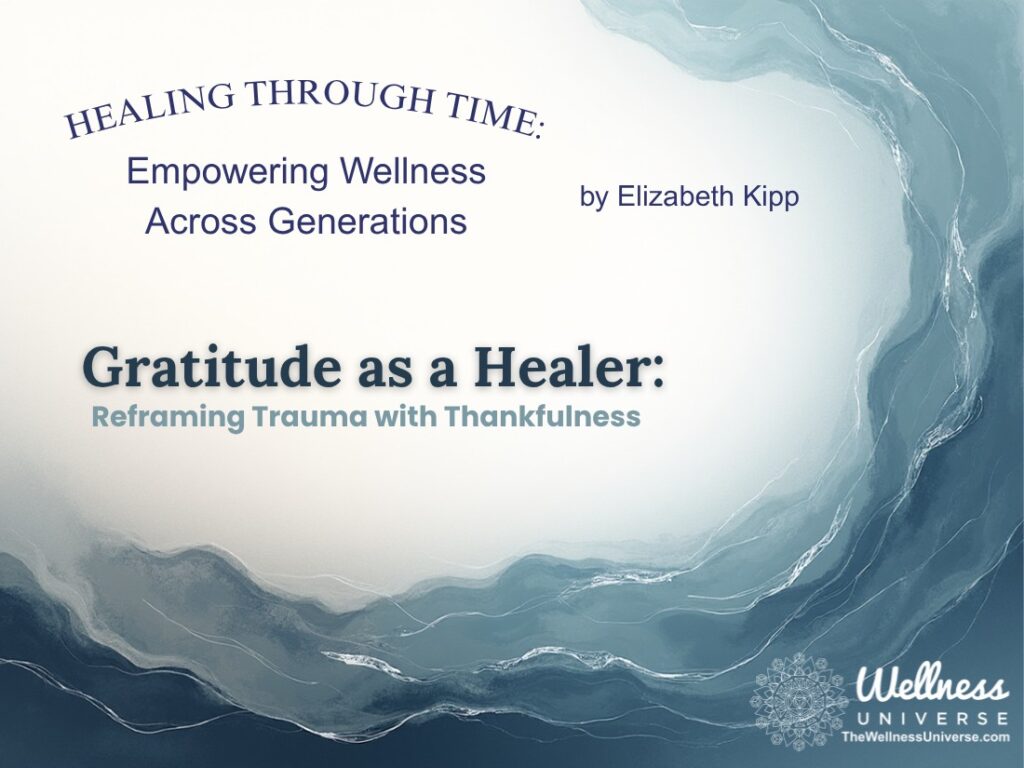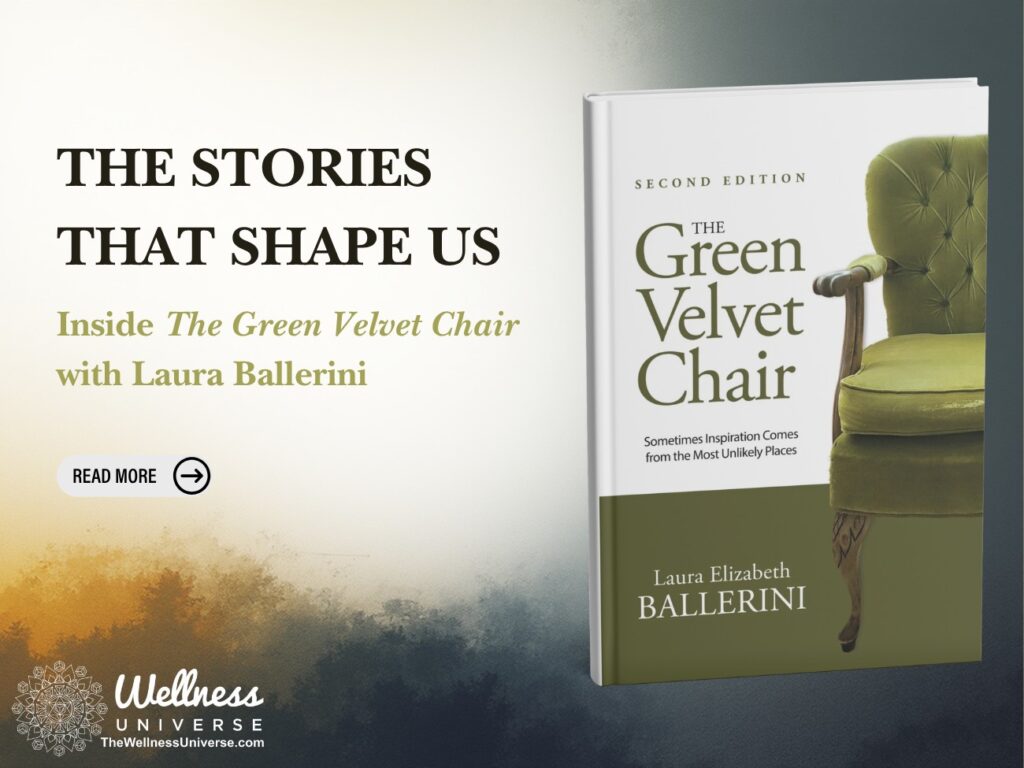Introduction: Why Gratitude Matters in Healing
Gratitude is often spoken of as a soft, almost sentimental practice, such as writing in a journal, saying “thank you,” or pausing to notice beauty. While those practices can be profound, gratitude is much more than a pleasant habit. Science now demonstrates that gratitude has measurable effects on the brain and body, particularly in the way it alters stress responses and supports trauma recovery.
For those of us living with trauma, whether personal or inherited through generations, gratitude becomes more than a feel-good exercise. It can be a tool of transformation. Gratitude shifts the nervous system from isolating survival mode into one of connection, strengthens our capacity for resilience, and rewires pathways in the brain toward healing. When approached intentionally, a gratitude practice helps us reclaim agency in the face of inherited scars and creates space for collective restoration.
This blog explores gratitude as an integrative healing practice rooted in neuroscience, psychology, and the wisdom of lived experience.
The Science of Gratitude: What Occurs in the Brain
Research in neuroscience has confirmed that gratitude activates powerful regions of the brain associated with reward, bonding, and regulation. Functional MRI scans reveal that when people engage in gratitude practices, areas such as the prefrontal cortex and anterior cingulate cortex become activated. These are the regions involved in decision-making, emotional regulation, and the development of empathy.
Gratitude also stimulates the release of dopamine and serotonin, the neurotransmitters most associated with feelings of well-being and safety. These chemical messengers create a positive feedback loop: the more we practice gratitude, the more our brain begins to seek out experiences to be grateful for.
Even more significantly, gratitude influences the vagus nerve, the central component of the parasympathetic nervous system. Polyvagal theory, pioneered by Dr. Stephen Porges, teaches us that trauma can trap us in states of hyperarousal (fight/flight) or shutdown (freeze). Gratitude helps tone the vagus nerve, shifting the body toward states of safety, connection, and rest. Over time, this repeated activation supports neuroplasticity, the brain’s ability to rewire itself in ways that sustain resilience.
Trauma and Its Lasting Imprint
To understand gratitude as a healing force, we must first acknowledge trauma’s enduring impact. Trauma is not just an event that happened in the past; it is the imprint left on the nervous system. It alters how we process memory, interpret threat, and connect with others.
Unresolved trauma often leaves us in patterns of hypervigilance, emotional dysregulation, or numbing. These patterns are not character flaws. They are survival strategies written into our biology. However, they also keep us locked into cycles of pain long after the threat has passed.
Gratitude does not erase trauma or make it disappear. It can create a bridge as a practice that allows us to hold the pain of what happened while simultaneously strengthening our capacity to notice what is life-giving. This balance is what keeps us from being overwhelmed by trauma’s influence. Gratitude becomes an anchor point, reminding the nervous system that safety and connection are possible in the present moment.
Inherited Trauma and Epigenetics
Trauma does not only live in individual experience. We now know from the field of epigenetics that trauma can be passed down through generations. Stress responses alter the expression of certain genes, and these changes can be inherited. For example, studies of descendants of Holocaust survivors or communities subjected to colonization and enslavement show patterns of stress vulnerability linked to ancestral trauma.
These inherited patterns can show up as heightened anxiety, difficulties with trust, or even physical health challenges. While this may sound discouraging, the hopeful truth is that epigenetic changes are not permanent. Healing practices, including mindfulness, social connection, and gratitude, can shift gene expression back toward balance.
When we practice gratitude, we not only transform our own nervous systems but also help interrupt cycles of inherited trauma. Gratitude becomes a collective act: a way of honoring past suffering while choosing to foster resilience and connection for future generations.
Gratitude Without Bypassing Pain
It is important to distinguish authentic gratitude from forced positivity. Gratitude as a healing practice is not about denying suffering or “looking on the bright side.” Trauma requires acknowledgment. Healing requires truth-telling. Gratitude works best when it is integrated with compassion for pain, rather than used to silence it.
For example, someone healing from childhood trauma might say:
- “I feel the weight of grief in my body, and I am thankful for the therapist who holds space for me.”
- “I acknowledge how abandonment has shaped me, and I am grateful for the chosen family I now have.”
In this way, gratitude is not used to cover over wounds but to weave threads of strength and connection through them. It allows us to honor pain while also expanding our awareness of what supports healing.
Practical Ways to Practice Gratitude in Trauma Healing
Gratitude is most powerful when it is embodied, relational, and consistent. Here are several gratitude practices that can support trauma healing:
1. Micro-Moments of Gratitude
Instead of expecting yourself to feel grateful for everything, notice micro-moments throughout the day: the warmth of sunlight on your skin, the sound of a bird, the comfort of a cup of tea. These small acknowledgments accumulate and gradually shift the nervous system.
2. Gratitude Journaling with Nuance
Rather than a rote list of “three good things,” allow yourself to name gratitude in a way that includes complexity: “I am grateful for my resilience in navigating a hard day.” This integrates truth with thankfulness.
3. Somatic Gratitude
Place a hand on your heart or belly and breathe deeply as you bring to mind something you are grateful for. Notice the felt sense in your body. This helps anchor gratitude into the nervous system.
4. Relational Gratitude
Express gratitude directly to others, whether through spoken words, letters, or even silent acknowledgment. Trauma isolates; gratitude restores connection.
5. Ancestral Gratitude
When working with inherited trauma, gratitude can take the form of acknowledging the survival and resilience of ancestors. For example: “I am grateful for the strength that allowed my ancestors to endure, even as I grieve what they suffered.”
Collective Healing Through Gratitude
Trauma is not only individual but also collective. Communities carry wounds of violence, oppression, and disconnection. Gratitude can be a force of communal restoration. Practices of collective gratitude, like ceremonies, rituals, and public acknowledgments, remind us of our interdependence.
For example, expressing gratitude to Indigenous peoples for their stewardship of the land or giving thanks for the resilience of communities who have endured systemic oppression can become powerful acts of collective healing. Gratitude extends beyond the personal into the realms of justice, solidarity, and restoration.
The Empowering Nature of Gratitude
One of trauma’s most devastating impacts is the sense of helplessness it leaves behind. Gratitude counteracts this by reconnecting us to agency. Each time we choose to name something we are thankful for, we are exercising choice, which is the very capacity trauma attempts to take from us.
Over time, gratitude fosters a new orientation to life: not one that ignores pain, but one that emphasizes noticing what is life-affirming, even in the midst of struggle. This shift empowers both personal healing and collective resilience.
Gratitude as a Pathway Forward
Gratitude is more than a polite social gesture or a spiritual buzzword. It is a profound healing practice rooted in neuroscience, psychology, and embodied wisdom. It transforms the nervous system, reshapes inherited trauma patterns, and strengthens our ability to face life with resilience.
For trauma survivors and communities carrying historical wounds, gratitude offers a way to reframe the story, not by denying pain, but by choosing to orient toward what sustains and heals. It is a practice that honors suffering while simultaneously amplifying life.
In this way, gratitude is not just a healer for one person; it is also a bridge for collective transformation. Each act of thankfulness becomes a ripple through our nervous systems, our relationships, our communities, and across generations.
Connect with Elizabeth on The Wellness Universe and follow her on Facebook and Instagram.
Healing. Here. Now. Mindfulness, Trauma, and Recovery is a course for self-care and healing brought to you in partnership with Elizabeth Kipp, Founder of Elizabeth Kipp Stress Management, LLC and Wellness Universe Trauma Expert Leader exclusively for Wellness for All programming.
Catch the replay – https://bit.ly/HealingHereNow
A Transformational Journey Workshops
Unlock the full transformational journey with all 29 powerful workshops!
Blessing for Your Transformation
with Elizabeth Kipp
Step into a powerful journey of healing and renewal with a live reading of Blessing for Your Evolutionary Transformation from the #1 best-selling book series The Wellness Universe Guide to Complete Self-Care: 25 Tools for Transformation. Release what no longer serves you, reconnect with your inner strength, and rediscover your purpose with clarity and peace. Join live for an inspiring experience of growth, conversation, and transformation—you don’t want to miss it!
#1 BEST SELLER AVAILABLE NOW!
The Wellness Universe Guide to Complete Self-Care, 25 Tools for Transformation
The Wellness Universe Guide to Complete Self-Care: 25 Tools for Transformation officially launched July 8, 2025! Inside, 35+ heart-led experts share real stories and powerful self-care tools to support your healing, resilience, and personal growth. Whether you’re navigating change or ready to rise to your next level, this book offers practical guidance and soul-deep inspiration to help you thrive.
Be part of the movement. Let’s create a more well world—together.
Elizabeth is a Health Facilitator, Empowerment Coach, EFT/Tapping and Ancestral Clearing Practitioner, and Kundalini Yoga Teacher, helping people to step into the power of their own healing. She has turned her attention as a patient advocate and health facilitator in service to the alarmingly high population of people who suffer from stress, chronic pain, and the quest for a life free from suffering.










